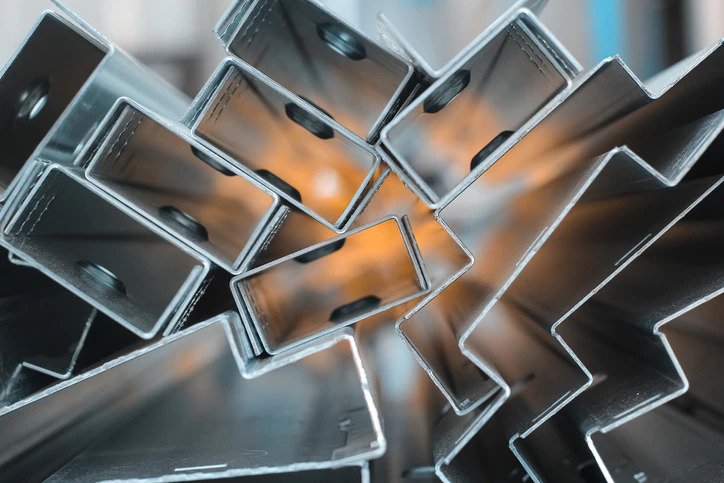The Cost of Under- and Over-Coating Zinc
26 May 2021 | Wednesday | Opinion | By By Chris Burnett

But for manufacturers who provide these zinc-coated products, the cost of zinc has increased substantially over the past few years, emphasizing the need to accurately measure and tightly control the amount used in galvanized coatings.
Zinc is the lightweight, rustproof metal used extensively in the automotive and construction industries because it has strong anticorrosive properties and bonds well with other metals. Consequently, about one-half of the zinc that is produced is used in zinc galvanizing, which is the process of adding thin layers of zinc to iron or steel to prevent rusting. In addition, zinc alloys well with other metals. Zinc is combined with copper to form brass and with other metals to be used in many automotive and electrical components.
Jefferson Lab, the U.S. Department of Energy Office of Science national laboratory, explains on its website that roughly one third of all metallic zinc produced today is used in a process known as galvanization. During galvanization, an object that is subject to corrosion is given a protective coating of zinc.
Continuous hot-dip galvanizing is an efficient method of coating large amounts of steel strip with a Zinc (alloy) layer. The process begins by heating up the steel and passing the steel through a bath of molten liquid Zinc or Zinc Alloy. For hot dip galvanizing lines, automatic coating weight control is essential for uniform production with minimized zinc consumption. As production varies from coil to coil, changes in air knife and process settings can be used to manage the transition and optimize yield. (For more specifics, read the white paper: The Benefits of Hot Coating Weight Measurements to Coating Control.)
The highest quality products are those with a uniform coating weight and no undercoated strip segments. Since coated coils are purchased based on a target coating weight, coils with any undercoated segments, even a few grams per square meter, are treated as defective goods, they cannot be sold as specified and result in economic losses.
The most direct method of reducing material costs associated with coating is to apply the minimum amount of zinc to meet the product specification. Considering quality and potential downgrading costs as mentioned earlier, it is the target to tighten the tolerances of the production to approach the lower specification as close as possible for minimized zinc consumption.
To get to those tight tolerances, manufacturers need to use metals coating weight gauges. These instruments can provide precise, real-time measurements that meet the tightest specifications of any application while maximizing raw material use.
Some gauges can help galvanizing lines optimize the zinc coatings. Manufacturers who typically ‘over coat’ ever so slightly to meet their customer’s demands, need to be aware that at zinc’s high prices, even an ‘ever so slight’ over coating can add up. Depending on how much product is produced, saving 1 gram per square meter on zinc coatings could save hundreds of thousands of dollars per year.
However, there are different kinds of gauges for different uses, so you must make sure that the gauge being used is suited for zinc applications, including both hot dip and electrolyte galvanization lines. Also note if it can perform at below 330 gsm (1.1 osf) per side (or G210), or below 550 gsm (1.8 osf) per side (or G360).
We’ve developed a Metals Coating Weight Gauges Product Comparison Table so you can compare the different applications.
Using the ideal coating weight means you’re not using too little or giving away too much – a good proposition for the long haul and the bottom line.
Most Read
- Top 25 Biotech & Biopharma Leaders in Sustainable Innovation, 2025
- China’s Biopharma Dealmaking Surges in H1 2025, Driven by Record Licensing and Oncology Focus
- Chikungunya in China: How a “Forgotten” Arbovirus Found the Perfect Storm
- How Innovation Gaps in Biopharma Raise New Safety Concerns
- Smart Implants and the Future of Musculoskeletal Injury Treatment
- How Ethical Gaps in Psychiatry Could Undermine Biopharma Progress
- The Evolving Landscape of Women’s Health Innovation in the Asia-Pacific
- Using NLP-Driven Decision Support in Emergency Health Assistance
- Taiwan Steps Into the Global Spotlight With a New Cancer Therapy
- The Role of Unique Device Identification (UDI) in Tracing Medical Device Safety
- The Importance of a Patient’s Mental Health During Clinical Trials
Bio Jobs
- The State of Biotech and Life Science Jobs in Asia Pacific – 2025
- Avantor’s New CEO Ligner Aims to Unlock Global Potential and Deliver Shareholder Value
- AstraZeneca Commits $50 Billion to U.S. Expansion by 2030 in Biggest-Ever Global Investment
- Thermo Fisher, SAMRC, and South Africa’s Department of Science and Innovation Launch CATIR to Nurture Next-Gen Scientists
- Cube Biotech Appoints Former Sartorius CEO Dr. Joachim Kreuzburg to Board of Directors
- FDA’s AI Transition Marks a Turning Point in Drug Review: Industry Faces Pressure to Adapt Amid 20% Workforce Cut
- WuXi XDC Completes Mechanical Build of Singapore Bioconjugate Manufacturing Hub
News
Editor Picks











